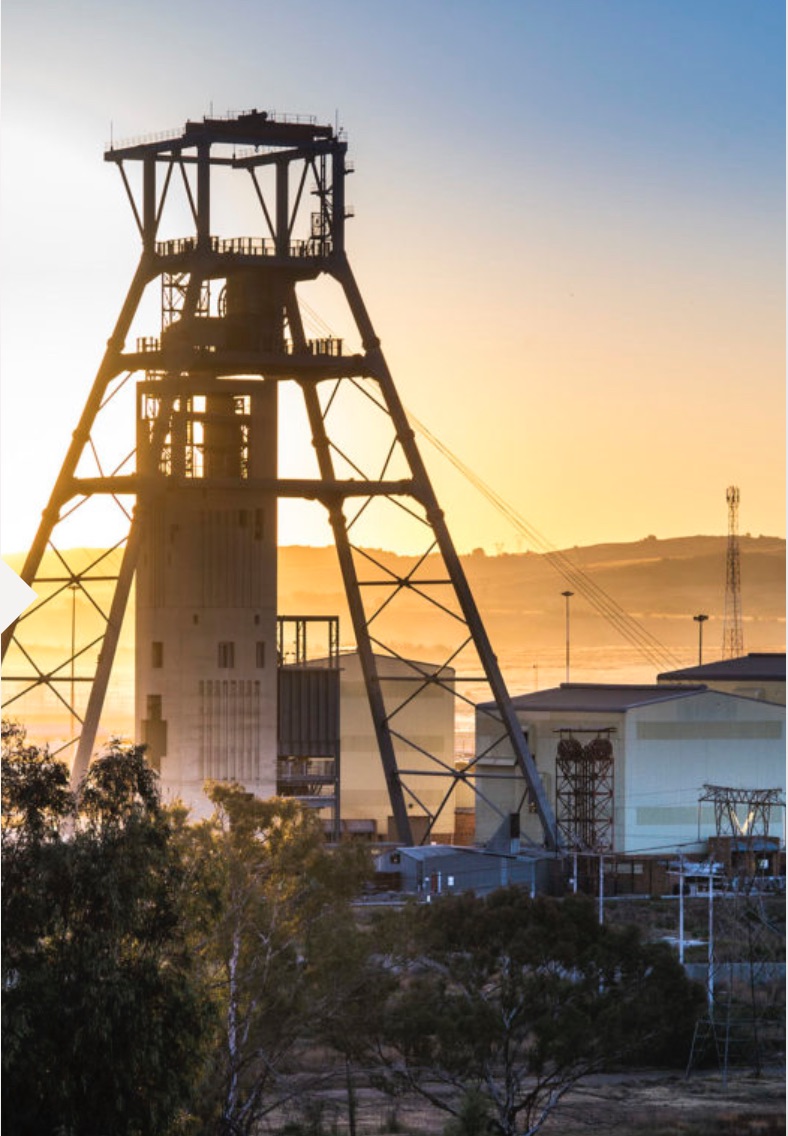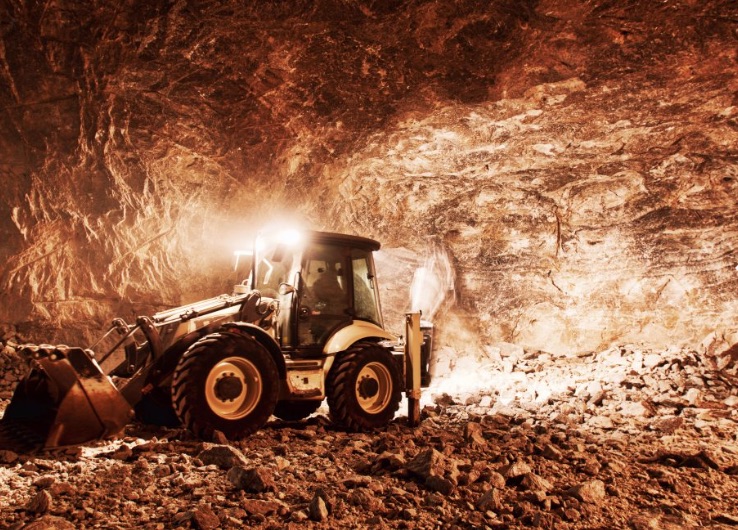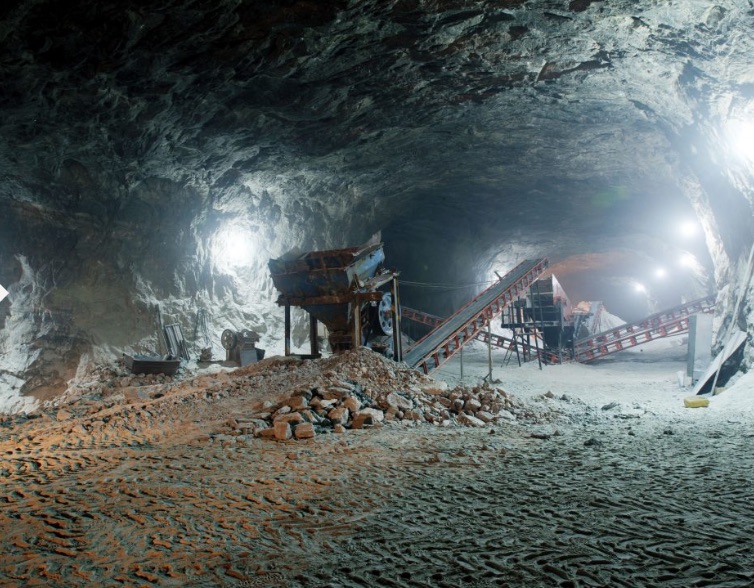Mining the Sky
 Mines reach the end of their life either as a result of depleting reserves, or when they become anti-economical to continue extraction due to commodity price cycles, loss of comparative advantage to another producing region, or, in some cases, environmental regulation. In North America, as in most of the world, mining companies cannot abandon the sites once they have ceased to function: the soil has been contaminated, the landscape has been altered, along with water flows and the local ecosystem. No longer a highly productive asset, the mine suddenly turns into a long-term liability. Mining companies have come to accept this fact of life in the extractive industry: Once earmarked for the extraction of nature's potential, these sites cannot find another fruitful use.
Mines reach the end of their life either as a result of depleting reserves, or when they become anti-economical to continue extraction due to commodity price cycles, loss of comparative advantage to another producing region, or, in some cases, environmental regulation. In North America, as in most of the world, mining companies cannot abandon the sites once they have ceased to function: the soil has been contaminated, the landscape has been altered, along with water flows and the local ecosystem. No longer a highly productive asset, the mine suddenly turns into a long-term liability. Mining companies have come to accept this fact of life in the extractive industry: Once earmarked for the extraction of nature's potential, these sites cannot find another fruitful use.
This doesn't have to be the case. In fact, the typical features of a closed mine site imply great potential for their redevelopment into renewable energy facilities. Having formerly consumed large amounts of electricity, mines usually have high capacity power lines. These lines allow the sites to connect to the grid, and conceivably transmit power in a capacity similar to the mine's previous electricity peak load. For an average-sized operation, this would easily be in the region of 100 to 150 MW. The topography of the site will generally display a number of favorable features, including one or more open pits or underground shafts offering a certain incline. The site typically has a large sized area where the tailings - the unused rock remaining after processing out the mineral - have been deposited; these are usually organized in large "dams", each several acres in size, with an incline of 1% for water flow and collection. Additionally, there will be a water source in the vicinities. Closed sites will also employ a team, which is needed for the continuous maintenance of the post-closure site. Finally, in many cases, depending on how recently the operation has been closed, there are communities nearby and jobs that have been lost due to the closure.
In conceptual terms, there is a relative abundance of stranded production factors that may be utilized in the most efficient way, by performing the simplest transformation of all: turning the site from a producer of minerals into a producer of energy. By using the topographic features (like the tailings dams for solar power, shafts for wind energy, or incline for pump storage), along with the existing locally-based team and interconnection lines, a large-scale energy generation facility can be built. In the United States, the economics of this business are such that, in regions with access to a liquid electricity market, the NPV of large-scale projects can be positive, by a significant margin. This amounts to transforming a previous mining activity into another "mining" activity - harnessing nature's vast availability of renewable energy. It effectively represents a paradigm shift from mining the ground, to mining the sky.
topographic features (like the tailings dams for solar power, shafts for wind energy, or incline for pump storage), along with the existing locally-based team and interconnection lines, a large-scale energy generation facility can be built. In the United States, the economics of this business are such that, in regions with access to a liquid electricity market, the NPV of large-scale projects can be positive, by a significant margin. This amounts to transforming a previous mining activity into another "mining" activity - harnessing nature's vast availability of renewable energy. It effectively represents a paradigm shift from mining the ground, to mining the sky.
 One relevant question that's usually raised is related to how this new use sits with the extractive industry. This question is often dismissed in mining C-suites, which tend to take a "it's not our core business" position. But in reality, the mining industry is naturally well positioned to generate and sell renewable electricity. In fact, the production of energy has historically been the motive of most of the extractive industry as a whole: as recently as 2014, the global extractive industry was heavily tilted towards fossil fuels, with the production of 7.9 billion tons of coal, and 7 billion tons equivalent of oil and gas, compared to only 2.5 billion tons of minerals (*). Fossil fuel production, however, is on the wrong side of history, or, more specifically, on the wrong side of the history of technology. Coal (with the exception of metallurgical coal) is almost univocally used in electricity generation. But coal-based generation is being phased out in most of the industrialized world. The efficiency of production of oil and gas is declining, while their prices are forever subject to the vagaries of commodity cycles. The cost curve of any renewable energy technology is, instead, a downward slope; sunlight and wind are free, and all the cost items in a renewable energy project can be predicted with a fair amount of accuracy.
One relevant question that's usually raised is related to how this new use sits with the extractive industry. This question is often dismissed in mining C-suites, which tend to take a "it's not our core business" position. But in reality, the mining industry is naturally well positioned to generate and sell renewable electricity. In fact, the production of energy has historically been the motive of most of the extractive industry as a whole: as recently as 2014, the global extractive industry was heavily tilted towards fossil fuels, with the production of 7.9 billion tons of coal, and 7 billion tons equivalent of oil and gas, compared to only 2.5 billion tons of minerals (*). Fossil fuel production, however, is on the wrong side of history, or, more specifically, on the wrong side of the history of technology. Coal (with the exception of metallurgical coal) is almost univocally used in electricity generation. But coal-based generation is being phased out in most of the industrialized world. The efficiency of production of oil and gas is declining, while their prices are forever subject to the vagaries of commodity cycles. The cost curve of any renewable energy technology is, instead, a downward slope; sunlight and wind are free, and all the cost items in a renewable energy project can be predicted with a fair amount of accuracy.
A string of large-scale coal retirements in the Southwest of the United States points to a detectable trend, whereby a utility decides to retire a few hundred megawatts of coal generation, thus leading to the closure of the coal sites that currently provide fuel to the plants. This is followed by call for proposals for replacement generation, invariably considering bids from renewable energy projects. The most obvious way forward for a closed coal site is to repurpose its own brownfield into a renewable energy farm. This idea has yet to emerge, but when it does, remember, you read it here first.
(*) International Organizing Committee for the World Mining Congresses, World Mining Data, Vol. 31, Minerals Production, Vienna 2016, https://www.en.bmwfw.gv.at/Energy/Documents/WMD2016.pdf
 Paolo Natali is the Director of Mining Projects for Sunshine for Mines, Rocky Mountain Institute's (RMI) flagship program on carbon reduction in the mining industry, founded in 2016 at Carbon War Room, and currently a $1M/year operation which advises mining industry clients on serving the electrical load of their operating sites and repurposing their closed sites into renewable energy facilities, as well as broader energy innovation and strategy.
Paolo Natali is the Director of Mining Projects for Sunshine for Mines, Rocky Mountain Institute's (RMI) flagship program on carbon reduction in the mining industry, founded in 2016 at Carbon War Room, and currently a $1M/year operation which advises mining industry clients on serving the electrical load of their operating sites and repurposing their closed sites into renewable energy facilities, as well as broader energy innovation and strategy.
Rocky Mountain Institute | www.rmi.org Sunshine for Mines | www.sunshineformines.com








